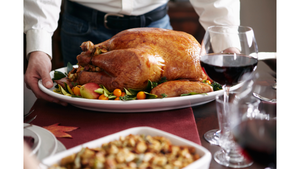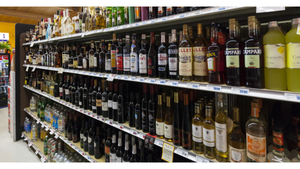CALIFORNIA STRAWBERRY ACREAGE GROWING AGAIN
WATSONVILLE, Calif. -- The acreage devoted to strawberry production in California enjoyed its second consecutive year of growth, according to the California Strawberry Commission, which compiles the annual figures.Some 26,339 acres of strawberries were planted for harvest in 2000, a 7% increase from the 24,603 acres planted for the 1999 season, according to officials. The Oxnard, Calif., growing area
February 21, 2000
ROBERT VOSBURGH
WATSONVILLE, Calif. -- The acreage devoted to strawberry production in California enjoyed its second consecutive year of growth, according to the California Strawberry Commission, which compiles the annual figures.
Some 26,339 acres of strawberries were planted for harvest in 2000, a 7% increase from the 24,603 acres planted for the 1999 season, according to officials. The Oxnard, Calif., growing area showed the biggest jump, with nearly 900 new acres of plants, up 13% from the year before. The Santa Maria and Watsonville/Salinas districts also saw increases, though the Orange County region remained roughly the same, as urbanization impeded acreage expansion, officials said.
California is the nation's largest producer of the fruit, providing more than 83% of the domestic supply. For retailers, the additional acreage -- combined with an ahead-of-schedule 2000 crop -- translates into more promotional opportunities, said Dave Riggs, president of the grower's association.
"Volume will be steadily increasing and shippers will be talking to customers about promoting strawberries earlier than normal," he said. "The relatively dry growing conditions have given us excellent quality, which means retailers should expect both quality and flavor."
The CSC's board of directors has approved a $5.6 million budget for marketing, research and public affairs programs for 2000. Of that total, $2.3 million is reserved for marketing. Data about category performance, ad incentives, training and point-of-sale materials are all in this year's effort, said Riggs.
"Our staff is working to maximize the market potential of the entire strawberry crop, both fresh and frozen," he said. "The retail marketplace continues to change and we are responding."
Another part of the marketing budget is devoted to direct consumer relations. This year, the focus is to promote strawberries through recipe and nutrition information features as a healthy part of the diet, according to Riggs. The CSC plans to work closely this year with the American Academy of Family Physicians and the American Dietetic Association to emphasize the health image of strawberries.
As more retailers move to adopt third-party audits of fresh produce, the CSC's own quality-assurance program will again be highlighted through grower outreach and education. The QAP, written in 1996, was implemented in 1997.
"The QAP gives consumers the highest level of confidence in our product," said Riggs. "We want to do everything we can to assist the industry in maintaining the highest safety and quality standards possible."
In conjunction with the crop forecast, the trade group also released new research showing that -- if handled properly -- the net profit on strawberries is competitive with or beats apples, lettuce or bananas. The study, conducted by the CSC and Willard Bishop Consulting, Barrington, Ill., sought to quantify the "true" profit contributions of these items and identified opportunities for retailers to improve their results using strawberries. According to the data, the berries can contribute upwards of 29% net profit, compared with lettuce (23%) and bananas (22%). Only apples secured higher margins, with 30%.
"The high consumer demand and rapid movement of strawberries means substantial dollar profit for the produce department," said Stephanie Chastain, CSC's marketing director, who added that communication and sharing of information between category management partners are the key to maximizing performance.
The research used the FreshFacts activity-based costing model, and examined the performance and financial information of four retail chains across the United States. Within the category, it found that 1-pound clamshells and half-trays were the best-selling items.
About the Author
You May Also Like




